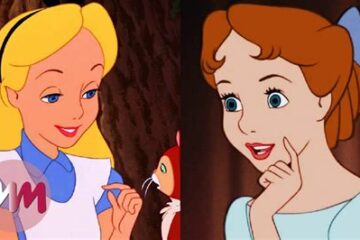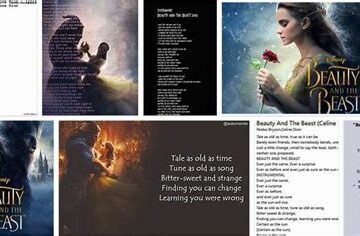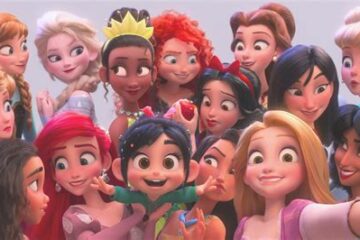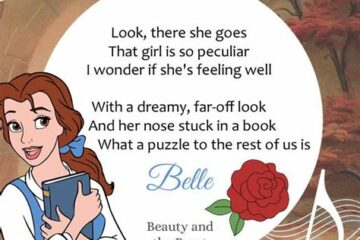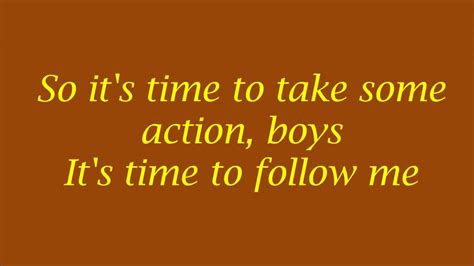
Beauty And The Beast Mob Song Lyrics
Welcome to our blog post that delves deep into the world of music and lyrics. In this article, we will embark on a journey filled with understanding, analyzing, exploring, decoding, and examining various aspects of a song. We will start by unraveling the meaning behind the lyrics, allowing us to connect on a more personal level with the artist’s intentions. From there, we will dive into analyzing the emotions portrayed in the song, exploring how they resonate with our own experiences. Additionally, we will take a step back in time, examining the historical context surrounding the lyrics, shedding light on their relevance beyond the present. Furthermore, we will unravel the symbolism in the Mob song, uncovering the intricacies that lie beneath the surface. Lastly, we will examine the impact of these lyrics on the storyline, investigating how they shape the narrative and captivate our imagination. Join us on this captivating journey of musical exploration as we uncover the hidden layers within the world of music.
Understanding the meaning behind the lyrics
Understanding the meaning behind the lyrics can greatly enhance our appreciation and connection to a song. Lyrics are the soul of a song, reflecting the thoughts, experiences, and emotions of the songwriter. They can convey a wide range of meanings, from straightforward narratives to complex metaphors. By delving deeper into the lyrics, we can unravel hidden messages, uncover personal anecdotes, and gain insight into the artist’s mindset.
One way to understand the meaning behind the lyrics is to analyze the words and phrases used. Pay attention to any recurring themes or motifs, as they can provide valuable clues about the central message of the song. Additionally, identifying strong keywords can help us grasp the underlying emotions and intentions of the artist. For example, words like “love,” “loss,” “hope,” or “freedom” can carry significant weight in a song, reflecting the songwriter’s personal experiences or societal commentary.
Another approach to uncovering the meaning behind the lyrics is to consider the context in which the song was written. Understanding the artist’s background, experiences, and influences can shed light on the inspiration behind their words. It can be helpful to research the songwriter’s interviews or biographies, as these often provide valuable insights into their creative process and intentions. Additionally, exploring the historical or cultural context of the lyrics can offer a broader understanding of the song’s meaning and relevance.
Listening to the song attentively is another essential aspect of understanding the meaning behind the lyrics. Take note of the tone, melody, and overall atmosphere created by the music. These elements can complement and enhance the lyrical content, conveying emotions and reinforcing the song’s message. Sometimes, the lyrics alone may not fully capture the intended meaning, but when combined with the music, they create a powerful and cohesive expression.
Understanding the meaning behind the lyrics can provide a deeper appreciation for a song and its artistic value. By analyzing the words, considering the context, and immersing ourselves in the music, we can uncover hidden layers of meaning, personal stories, and profound emotions. So next time you find yourself captivated by a song, take a moment to decode its lyrics and unlock the captivating world within.
Analyzing the emotions portrayed in the song
The emotions portrayed in a song are often what draw us in and make us connect with the music on a deeper level. When we listen to a song, we can feel the joy, the sorrow, the excitement, or the heartbreak that the artist intends to convey. In this blog post, we will be analyzing the emotions portrayed in songs and exploring how they can affect us emotionally.
Music has a unique ability to evoke powerful emotions within us. Whether it’s the upbeat tempo and catchy melody of a pop song that makes us feel happy and carefree, or the haunting lyrics and melancholic tune of a ballad that brings tears to our eyes, each song has its own emotional impact. The emotions portrayed in a song can range from love and happiness to sadness and anger, and everything in between.
One way that artists convey emotions in their songs is through the use of lyrics. The words they choose and the way they deliver them can have a profound effect on how we interpret and connect with the music. A heartfelt ballad with heartfelt lyrics, for example, can make us feel a deep sense of empathy and understanding for the songwriter’s emotions.
- Love: Songs that portray love often elicit feelings of warmth and affection. These songs often have romantic lyrics and melodic tunes that make us feel swept off our feet.
- Sadness: Songs that convey sadness can bring forth feelings of melancholy and sorrow. They may have mournful lyrics and slow, somber melodies that resonate with our own experiences of loss or heartbreak.
- Happiness: Songs that exude happiness can make us feel joyful and uplifted. They often have lively beats, catchy hooks, and lyrics that inspire positivity and celebration.
In addition to lyrics, the instrumentation and melody of a song can also play a crucial role in conveying emotions. A song with melancholic piano chords and a slow, gentle melody can evoke a sense of longing or wistfulness, while a song with fast-paced drums and energetic guitar riffs can evoke a feeling of excitement or adrenaline.
In conclusion, analyzing the emotions portrayed in a song allows us to delve deeper into its meaning and connect with the artist on an emotional level. Whether it’s through heartfelt lyrics, captivating melodies, or a combination of both, music has the power to evoke a wide range of emotions within us. So next time you listen to your favorite song, take a moment to appreciate the emotions it portrays and how it resonates with your own feelings.
Exploring the historical context of the lyrics
When it comes to understanding the true meaning of a song, it is essential to delve deep into the historical context of the lyrics. Lyrics are often a reflection of the time period in which they were written, and they can provide valuable insights into the social, political, and cultural influences of that time. By exploring the historical context of the lyrics, we can gain a better understanding of the thoughts, emotions, and experiences that shaped the songwriter’s perspective.
One way to analyze the historical context of lyrics is to examine the events and issues that were prevalent during the time of their creation. For example, if we were to explore the historical context of Bob Dylan’s iconic song, “The Times They Are a-Changin’,” we would uncover a wealth of information about the Civil Rights Movement, the Vietnam War, and the counterculture of the 1960s. These lyrics were not only a commentary on those specific events, but also a reflection of the widespread social unrest and desire for change that characterized that era.
Another important aspect of exploring the historical context of lyrics is considering the cultural norms and values of the time. Lyrics can often be influenced by the prevailing attitudes towards gender, race, class, and other social issues. For instance, examining the historical context of songs from the early 20th century can provide us with a glimpse into the gender roles, societal expectations, and racial tensions of that time. By understanding these cultural factors, we can gain a deeper appreciation for the challenges and struggles that inspired the lyrics.
Decoding the symbolism in the Mob Song
The Mob Song, from Disney’s animated film, Beauty and the Beast, is an iconic piece of music that holds a significant place within the storyline. This powerful song not only showcases the rage and anger of the townspeople but also incorporates various symbols that add depth and meaning to the narrative. By delving into the symbolism present in the Mob Song, we can gain a deeper understanding of the characters and their motivations, as well as unravel the hidden messages within the lyrics.
One prevalent symbol in the Mob Song is the torches carried by the angry mob. These flaming torches not only serve as a visual representation of the villagers’ anger but also symbolize their desire for vengeance and destruction. The flickering flame of the torches effectively conveys the passionate intensity driving the mob, revealing the dangerous and volatile nature of their emotions. Through this symbol, the song emphasizes the destructive power that unchecked anger can possess.
Another symbol within the Mob Song is the pitchforks held by the townspeople. The pitchfork has long been associated with farming and agriculture, typically representing hard work and a connection to the land. In this context, however, the pitchfork transforms into a weapon, symbolizing the collective strength and determination of the mob. The townspeople have banded together, united in their mission to eradicate the Beast and what he represents. The pitchforks, therefore, become a symbol of their shared purpose and their unwillingness to tolerate anything that threatens their way of life.
In addition to the physical symbols, the lyrics of the Mob Song also contain deeper meanings. The line, “Screw your courage to the sticking place,” alludes to Shakespeare’s Macbeth, where Lady Macbeth encourages her husband to find the strength to carry out their nefarious plans. This reference adds a layer of darkness and desperation to the song, reinforcing the villagers’ resolve to eliminate the Beast at any cost.
- The torches symbolize anger and destruction.
- The pitchforks represent unity and determination.
| Symbol | Meaning |
|---|---|
| Torches | Anger and destruction |
| Pitchforks | Unity and determination |
By decoding these symbols in the Mob Song, we uncover the hidden messages and thematic elements within the lyrics. Through the use of torches and pitchforks, the song captures the intense emotions and collective determination of the villagers. These symbols not only enhance the visual and auditory experience but also contribute to the overall storytelling, providing a deeper understanding of the characters and their motives. The Mob Song is a masterful composition that uses symbolism to elevate the narrative of Beauty and the Beast and resonate with audiences on a profound level.
Examining the impact of the lyrics on the storyline
The impact of lyrics on a storyline can often be overlooked, but it plays a crucial role in enhancing the overall narrative of a song. Lyrics have the power to convey emotions, tell a compelling story, and create a lasting impression on the listeners. By carefully examining the lyrics and their connection to the storyline, we can uncover the depth and significance they bring to the musical composition.
One way lyrics impact the storyline is by setting the mood and tone of the song. The choice of words, imagery, and metaphors used in the lyrics can create a specific atmosphere that aligns with the emotions and themes of the storyline. For example, if the lyrics are filled with melancholic and sorrowful phrases, it suggests that the storyline might revolve around heartbreak or loss. Conversely, if the lyrics are filled with optimistic and uplifting phrases, it suggests a more positive and hopeful storyline.
Another way lyrics impact the storyline is by providing insights into the characters and their motivations. Through the words sung by the characters, we can gain a deeper understanding of their thoughts, desires, and conflicts. The lyrics can reveal their vulnerabilities, their past experiences, and their aspirations, adding layers of complexity to the storyline. By examining the lyrics closely, we can analyze the development and progression of the characters throughout the song.
Moreover, lyrics can also drive the plot of the storyline. They can introduce conflicts, provide resolutions, or create plot twists within the song. For instance, a sudden change in the lyrics might indicate a turning point in the storyline or a climax of emotions. By examining the lyrics in conjunction with the musical arrangement, we can trace the narrative arc and understand how it unfolds through the progression of the song.
In conclusion, lyrics have a profound impact on the storyline of a song. They contribute to the overall mood, provide insights into the characters, and drive the plot forward. By examining the lyrics closely and analyzing their connection to the storyline, we can gain a deeper appreciation for the narrative depth and significance they bring to the musical composition.
Frequently Asked Questions
1. What is the meaning behind the lyrics of the song?
The lyrics of the song convey the feelings of the characters and the overall message of the song. They can explore themes such as love, heartbreak, or social issues, depending on the specific song.
2. What emotions are portrayed in the song?
The emotions portrayed in a song can vary widely. Some songs may evoke feelings of happiness and joy, while others might express sadness, anger, or even confusion. The specific emotions portrayed will depend on the lyrics and musical elements of the song.
3. How does the historical context of the lyrics affect their meaning?
The historical context of lyrics can provide important background information and enhance the understanding of a song’s meaning. It can shed light on the social, cultural, or political influences that inspired the lyrics and help listeners interpret the song in a more informed way.
4. What symbolism can be found in the Mob Song?
The Mob Song from Beauty and the Beast contains various symbolic elements. For example, the angry mob can symbolize the collective fear and ignorance within a community, while the Beast represents the unknown or the misunderstood. The song’s lyrics and imagery can be analyzed to uncover further layers of symbolism and meaning.
5. How do the lyrics impact the storyline?
The lyrics of a song can play a crucial role in advancing the storyline of a musical or concept album. They can reveal character motivations, express character development, or provide important plot points. By examining the lyrics closely, listeners gain a deeper understanding of the narrative and the impact of the lyrics on the overall story.
6. What are some examples of the emotions portrayed in popular songs?
Popular songs often portray a wide range of emotions. Some examples include love and passion in romantic ballads, empowerment and strength in anthems, heartbreak and sadness in breakup songs, and excitement and energy in dance tracks. The emotions conveyed in popular songs vary to cater to different moods and experiences.
7. How can understanding song lyrics enhance the overall listening experience?
Understanding song lyrics can enhance the overall listening experience by allowing listeners to connect on a deeper level with the music. It can provide insight into the artist’s intentions, personal experiences, or socio-cultural context. By deciphering the lyrics, listeners can fully appreciate the emotions, themes, and messages conveyed in the song.
Top 10 Disney Characters You Didn’t Know About
December 30, 2024A Deep Dive Into Disney Princesses And Their Stories
December 29, 2024The Meaning Behind Beauty And Beast Lyrics
December 29, 2024Why Beauty And The Beast Is A Timeless Disney Classic
December 29, 2024The Role Of Disney Princesses In Modern Culture
December 29, 2024Exploring The Themes In Beauty And The Beast Lyrics
December 28, 2024
Leave a reply Cancel reply
Recommended
-
The Role Of Friendship In Beauty And The Beast
December 6, 2024 -
Beauty and the Beast Songs and Lyrics
November 16, 2021 -
Be Our Guest Lyrics From Beauty And The Beast
August 26, 2023

